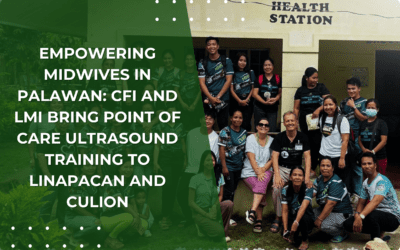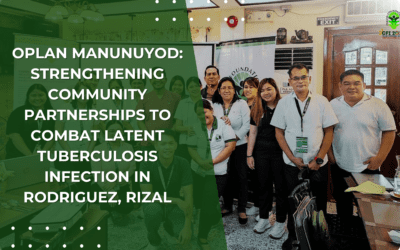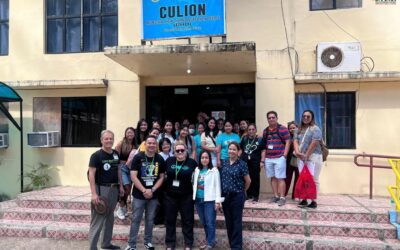Culion, situated in Palawan, Philippines, was designated as a leprosarium in the early 1900s, resulting in the segregation of leprosy patients and the label “Island of the Living Dead.” Despite facing challenges like overcrowding and limited resources, efforts were undertaken to enhance conditions. The emergence of Multi-Drug Therapy (MDT) brought about a significant change, effectively treating and curing numerous patients while challenging societal stigma. Organizations such as the Culion Foundation, Inc. (CFI) played a pivotal role in rehabilitating patients and facilitating their reintegration into society, ultimately transforming Culion from a symbol of suffering into a symbol of recovery.
The pivotal supporters of the projects that have shaped Culion into what it stands as today are the Culion Foundation, Inc. and Fundacion ANESVAD, both non-governmental organizations. The involvement of Fr. Javier Olazabal, who arrived in Culion as its Catholic chaplain, brought a heightened focus on the plight of the remaining leprosy patients and the grim future confronting the ostracized island. Conversations between Fr. Olazabal and Jose Ma. Soriano Sr., a Spanish-American industrialist with significant business ties in the Philippines and an advocate of substantial yet discreet philanthropic efforts, along with Jose Luis Gammara, a former student of Father Olazabal in Spain who had risen to the position of president at Fundacion ANESVAD, gave voice to these concerns.
CFI’s establishment marked the culmination of previous efforts led by Fr. Ignacio Maria de Moreta and the Catholic Pastoral Council in Culion. Serving as a key non-governmental organization, CFI directed funding from various sources towards Culion’s rehabilitation. Its focus included hospital projects, local groups, and later collaboration with the local government. Operating exclusively in Culion for over a decade, CFI partnered closely with the Culion Sanitarium under the Department of Health. Funding came from contributors like Fundacion ANESVAD, the Embassy of the Sovereign Military Order of Malta, and San Miguel Corporation, among others.
Supported by its mother agency, the Culion Sanitarium immediately implemented the treatment on a mass basis in Culion when the World Health Organization (WHO) recommended multidrug therapy (MDT) in 1986. The CFI waged a campaign to get lepers to voluntarily submit themselves to the treatment, as well as to teach people to recognize leprosy and to report those who were suffering from it. It set up a feeding program, supervised by Father Olazabal himself, which was later seen as a contributing factor in the success of the MDT in Culion. About 250 patients came for the feeding and the shots.
In the 1990s, CFI joined forces with various organizations, including the Culion Sanitarium, Leonard Wood Memorial, University of Hawaii, the Research Institute for Tropical Medicine (RITM), PASMOM, and Philippine Leprosy Mission, to implement the ELISA leprosy susceptibility test. This initiative involved collecting numerous blood samples, assigning plate numbers to households, and identifying individuals highly susceptible to leprosy. The ELISA, originally designed for AIDS and hepatitis, was used to detect leprosy risk before symptoms emerged. This was crucial because leprosy’s initial signs appear years after infection. As an added measure, high-risk individuals received chemoprophylaxis treatment. In 1993, CFI played a role in executing a chemoprophylaxis program, completing a comprehensive approach to combating leprosy in Culion. CFI’s support extended to funding the sanitarium’s Leprosy Control Program, with a specific emphasis on MDT Phase 2. The chemoprophylaxis effort targeted individuals identified as potential patients through testing, providing them with early treatment.
CFI transferred certain programs to the Culion Sanitarium’s Leprosy Control and Rehabilitation Program. By 1997, its engagement in Culion had been streamlined to the Father Olazabal Leprosy Control and Rehabilitation Program and Community Development Assistance. Despite criticism from some patients who viewed CFI’s planned withdrawal as abandonment, CFI considers its departure as leaving behind a legacy. This legacy encompasses the transformation of Culion from an “island of the living dead” to an “island of hope.” Culion’s residents now hold full responsibility for their well-being, families, and future
Currently, CFI is also active in various regions of the Philippines, such as Cebu, Siquijor, and Tawi-Tawi provinces. Its efforts extend to executing control initiatives for leprosy and other infectious diseases like Tuberculosis. With years of established experience, CFI utilized innovative approaches, forged vital partnerships, and transformed countless lives affected by leprosy. Drawing upon a substantial history of effectively managing the consequences of leprosy, CFI has shown unwavering dedication and demonstrated proficiency in confronting pertinent challenges in public health. This remarkable journey emboldens us to now direct our capabilities towards the battle against tuberculosis (TB). Just as we have consistently demonstrated in our historical efforts, CFI harbors immense potential to wield a significant influence in the field of TB mitigation. The very principles that have guided our success in conquering leprosy – dedication, innovation, and collaboration – serve as the pillars of our strategic approach to combatting TB. With the same tenacity that guided us in past accomplishments, we embark on this expedition with renewed enthusiasm, fully prepared to leave a long-lasting impact on the lives of individuals and communities that are affected by the challenges of TB.



